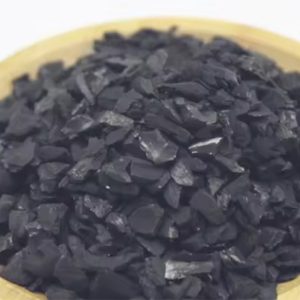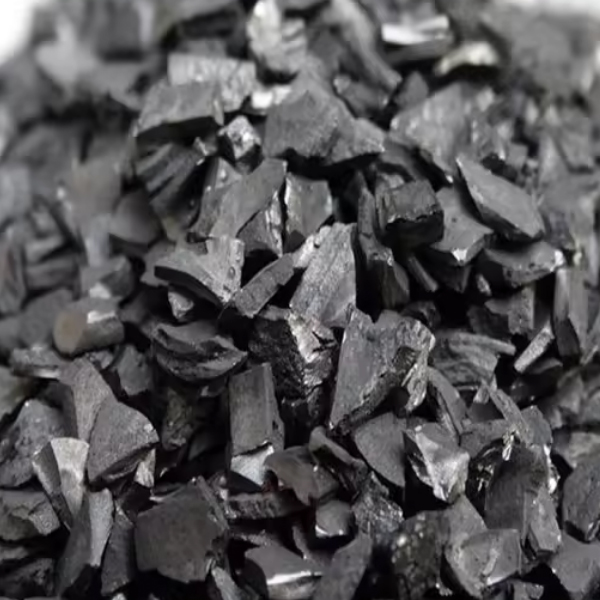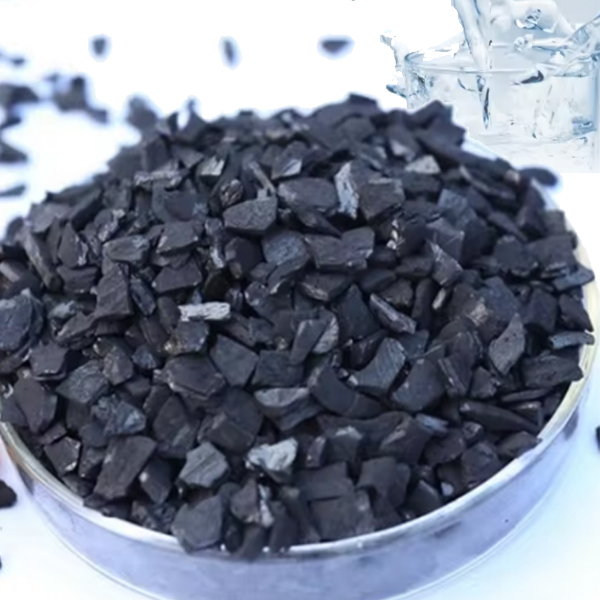As an excellent adsorption material, activated carbon is widely used in many fields such as air purification, water treatment, chemical industry and food industry. For consumers and industrial users, it is very important to choose the right activated carbon. When evaluating the performance of activated carbon, iodine value and particle size are two key indicators.

1.What is the iodine value of activated carbon?
Iodine value is an important indicator to measure the adsorption performance of activated carbon, which represents the adsorption capacity of activated carbon for iodine molecules. Generally speaking, the higher the iodine value, the stronger the adsorption capacity of activated carbon. The iodine value mainly reflects the number of micropores of activated carbon. Therefore, activated carbon with a higher iodine value performs better in adsorbing small molecules. In the market, iodine value is often used to distinguish the performance of activated carbon.
Coconut shell activated carbon uses coconut shell as raw material, with well-developed micropores and a high iodine value. The iodine value of conventional coconut shell activated carbon is between 900-1300 mg/g, and can even reach 1600 mg/g after special processing. However, the demand for activated carbon with high iodine value is relatively small. In China, iodine values below 1300 mg/g are generally the main ones. Coconut shell activated carbon exceeding 1300 mg/g often needs to be customized and used in fields with particularly high requirements for adsorption performance.
2.Can the iodine value of activated carbon be infinitely increased?
Theoretically, the higher the iodine value of activated carbon, the more developed its microporous structure and the stronger its adsorption capacity. However, the higher the iodine value, the better, because the adsorption capacity of activated carbon also depends on the molecular size of the adsorbate and the pore size distribution of the activated carbon. Activated carbon with an iodine value that is too high may perform poorly when adsorbing some larger molecular substances. In addition, the cost of manufacturing activated carbon with a high iodine value is high, which is not economical for some companies.
3.What is the particle size of activated carbon?

Particle size, that is, the size of activated carbon particles, is an important factor affecting the adsorption rate and effect of activated carbon. Usually, the particle size of activated carbon is expressed in mesh number. The higher the mesh number, the smaller the particles; the lower the mesh number, the larger the particles. In the production and use of activated carbon, particle size is closely related to adsorption rate. Generally speaking, the smaller the particles, the larger the specific surface area of activated carbon, and the faster the adsorption rate. Particle size is usually divided into granular activated carbon and powdered activated carbon.
4.How high can the mesh number of activated carbon with different particle sizes be?
Granular activated carbon: Granular activated carbon has a larger particle size, generally between 4-100 mesh, and is mainly used in air purification, gas separation, liquid filtration and other occasions. This type of activated carbon performs well in adsorbing large molecules and long-term adsorption, but for the need for rapid adsorption, the effect is not as good as powdered activated carbon. Powdered activated carbon: Powdered activated carbon has a finer particle size, and the commonly used specifications are 200 mesh and 325 mesh. It is suitable for water treatment, food decolorization, chemical separation and other fields. So, is 325 mesh the highest mesh number of powdered activated carbon? In fact, it is not the case. With the advancement of production technology, the mesh number of powdered activated carbon can reach higher, and there are even 600 mesh ultra-fine powdered activated carbon. This type of activated carbon has obvious advantages in ultra-fine powder adsorption, but its production process is complicated and the market demand is limited, so it is usually only used for specific high-precision adsorption needs.
5.Relationship between iodine value and particle size
Iodine value and particle size are two relatively independent indicators, but they complement each other in adsorption applications. Activated carbon with high iodine value is suitable for occasions with well-developed micropores and high demand for small molecule adsorption, while activated carbon with fine particles is suitable for occasions with high adsorption rate requirements. Usually, activated carbon with high iodine value is more common in coconut shell materials, while activated carbon with high mesh number appears in powder form. When selecting activated carbon, users should comprehensively consider the matching of iodine value and particle size based on factors such as the molecular characteristics of the actual adsorbate and the adsorption time requirements to achieve the best use effect.
6.The relationship between particle size and performance
The particle size determines the specific surface area and adsorption rate of activated carbon. The larger the mesh number, the smaller the particle size, the larger the specific surface area, and the faster the adsorption rate. In the market, common powdered activated carbon particle sizes are 200 mesh and 325 mesh, but in actual applications, the upper limit of activated carbon particle size is higher, even up to 600 mesh. 200 mesh and 325 mesh: This is the particle size range of conventional powdered activated carbon, which is suitable for most scenarios that require rapid adsorption, such as wastewater treatment and food decolorization. 325 mesh and above: Activated carbon with higher mesh numbers is suitable for refined processing, such as high-end electronic products or the pharmaceutical field, but it is more difficult to produce and process, and the demand in the market is relatively limited.



